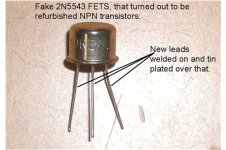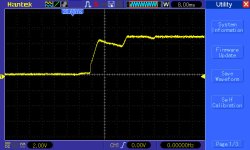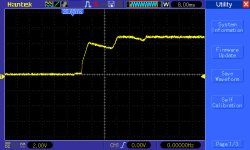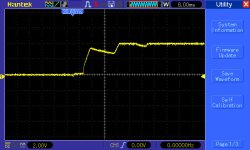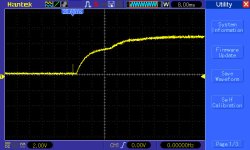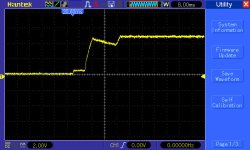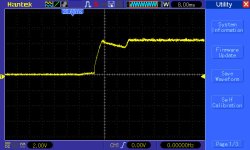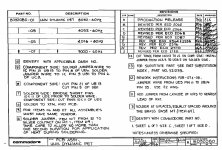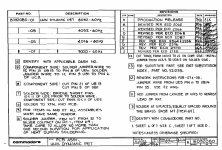Hugo Holden
Veteran Member
While we are on the topic of fakes, one of the fakes I once received was that of a high voltage jFet a 2N5543. The reason I caught this out was, there is transistor equivalent manual that mistakenly says its an NPN transistor, the fakers must have used that. But the astonishing thing was, it was a used transistor with short legs, they had welded on longer legs ! Then Tin plated over the welds !
The welds themselves were interesting, the wire faces were not cut perpendicularly to the wire axis, instead they were cut at an angle to create an elliptical face, presumably to increase the surface area. But, bending them with the pliers they fractured there and inspection of the weld faces indicated the join was incomplete & poor quality. Also, I don't think Motorola ever made this particular part.
But for the price of the part I could not believe someone went to this effort. I wrote to the seller and informed them if they were going to fake parts, at least they should select a similar part to fake and told them not to believe everything they read in a transistor equivalence book.
The welds themselves were interesting, the wire faces were not cut perpendicularly to the wire axis, instead they were cut at an angle to create an elliptical face, presumably to increase the surface area. But, bending them with the pliers they fractured there and inspection of the weld faces indicated the join was incomplete & poor quality. Also, I don't think Motorola ever made this particular part.
But for the price of the part I could not believe someone went to this effort. I wrote to the seller and informed them if they were going to fake parts, at least they should select a similar part to fake and told them not to believe everything they read in a transistor equivalence book.
Attachments
Last edited:

